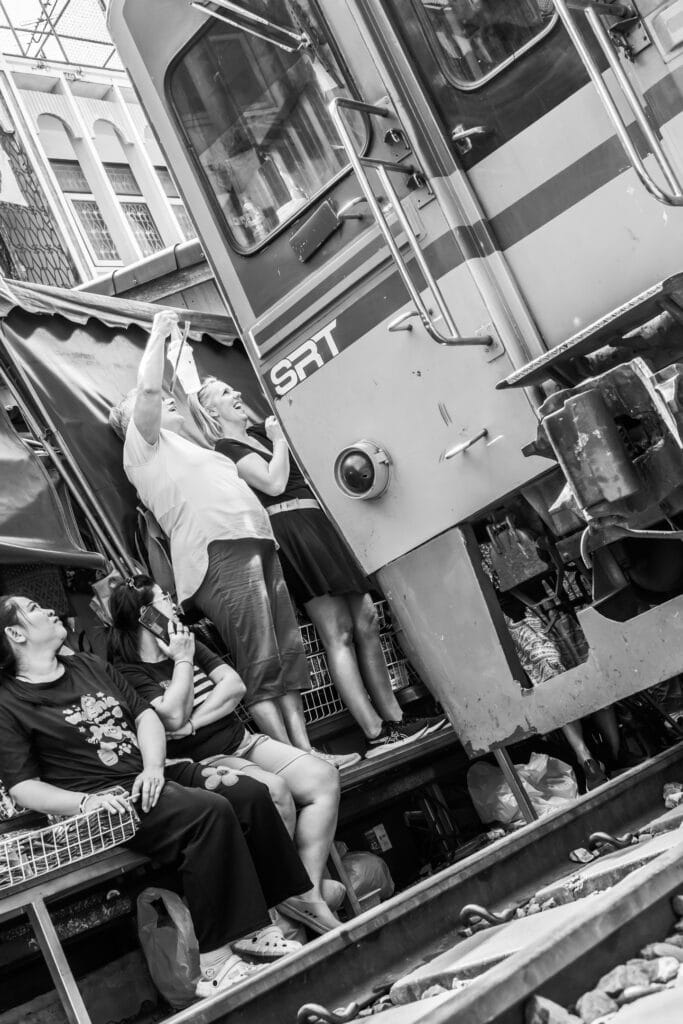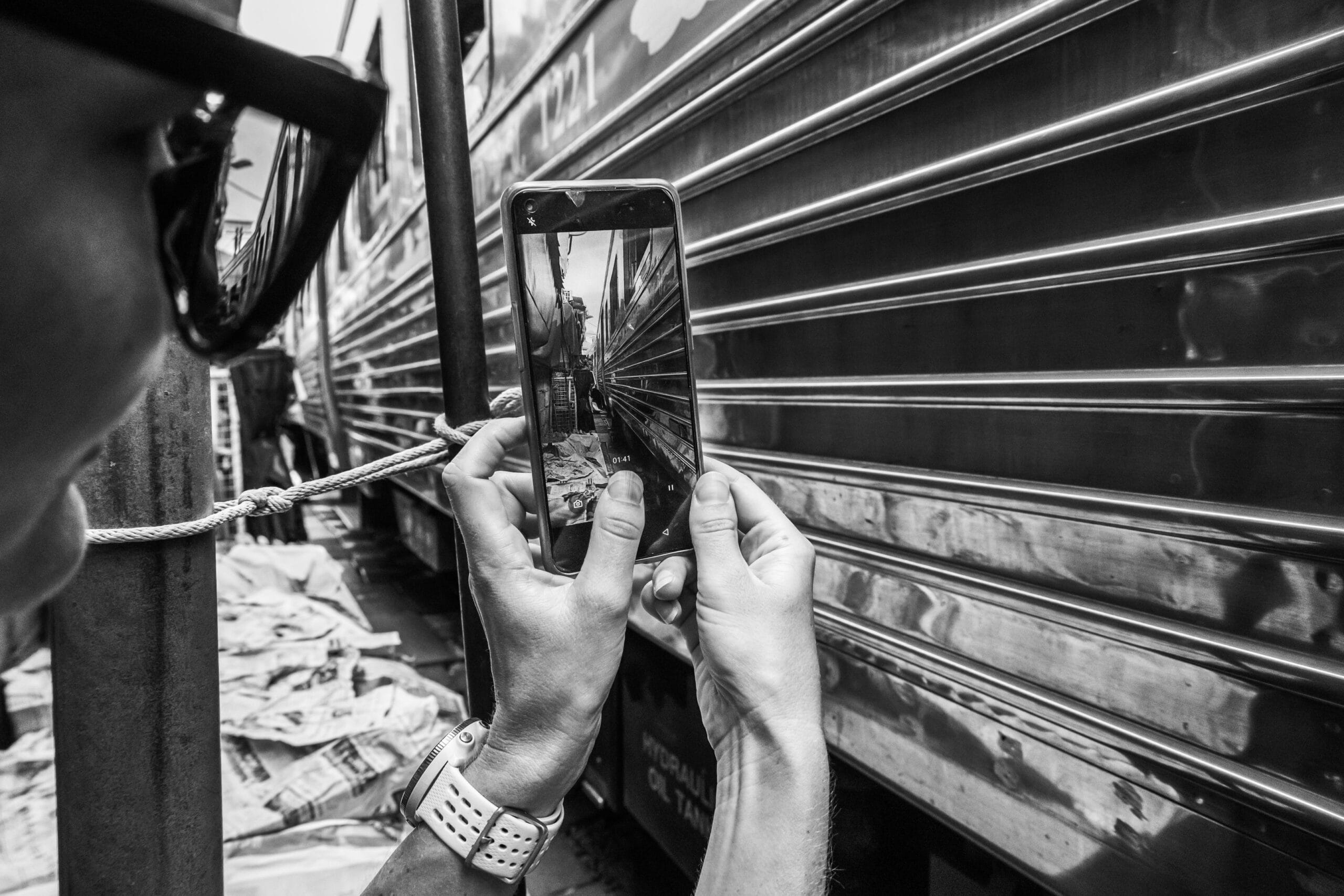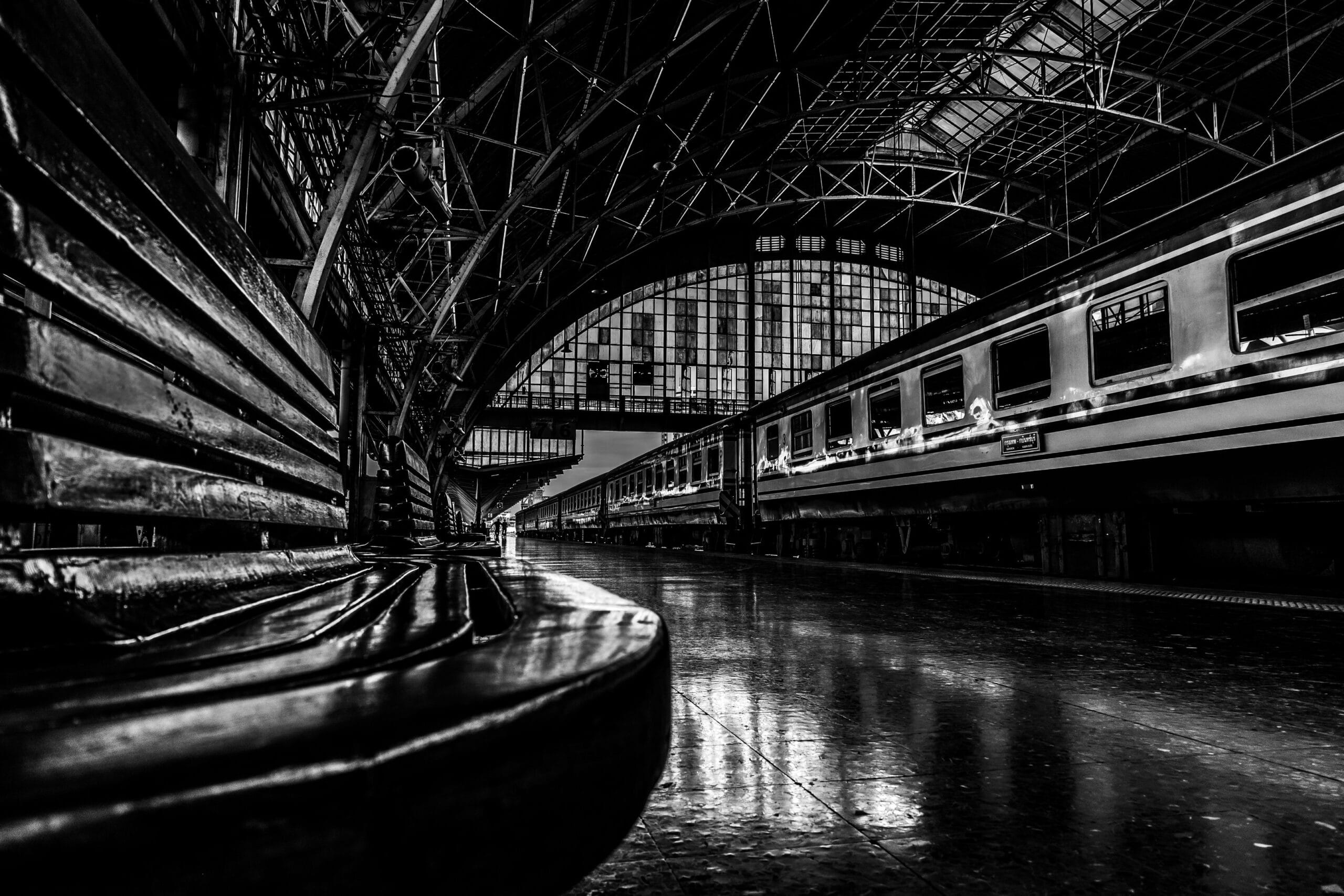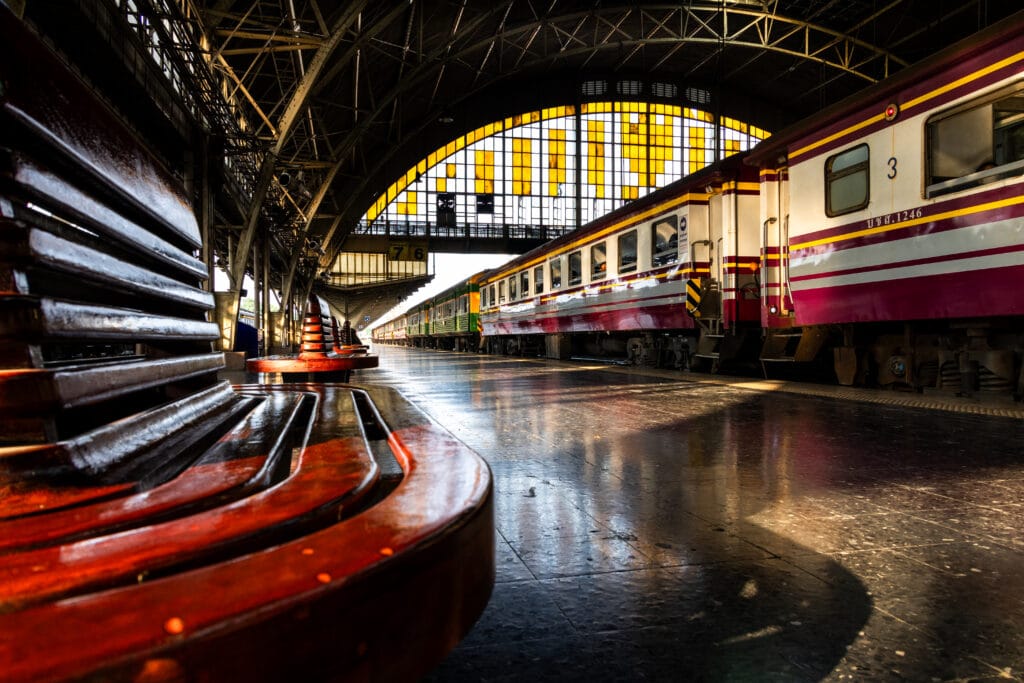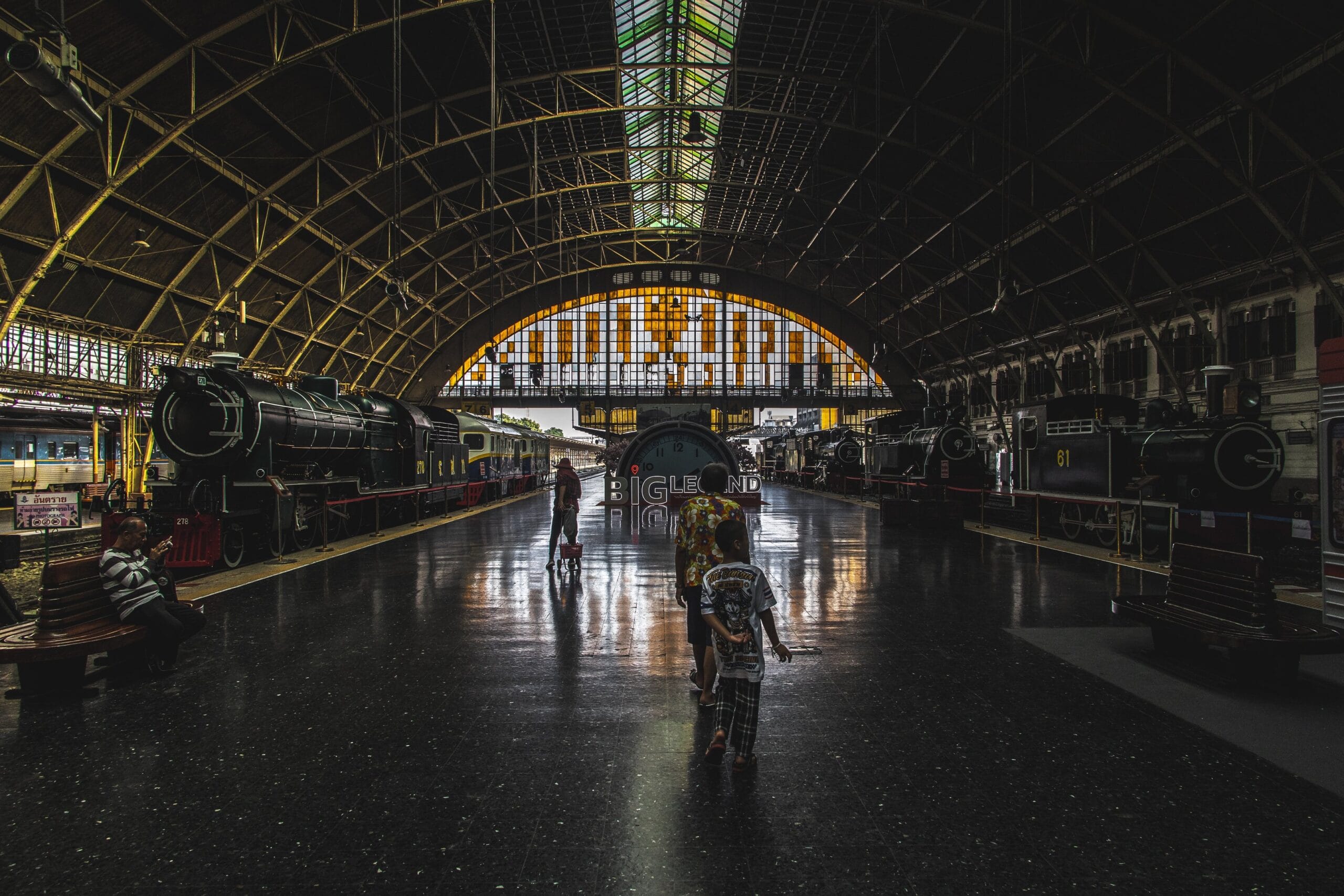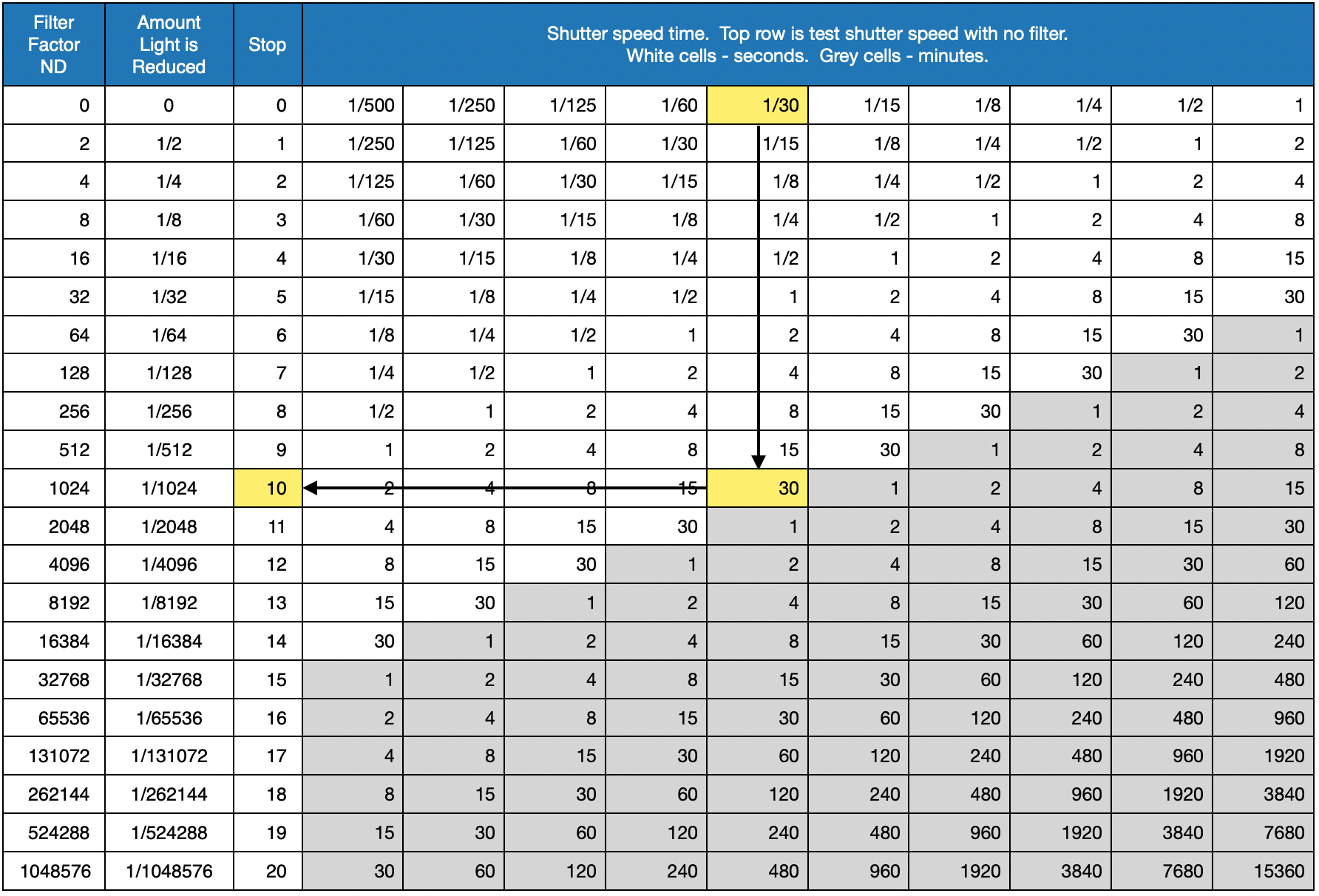Introduction
The Mae Klong (Khlong) Railway Market in Bangkok offers a truly unforgettable experience. Imagine a bustling local market, brimming with fresh produce and various goods, uniquely situated directly on active train tracks. Several times a day, as the train approaches, vendors swiftly and skilfully clear their stalls, creating just enough space for the train to pass through mere inches away. This incredible scene, which is locally named Talad Rom Hub (folding umbrella market) has become a popular attraction, showcasing a fascinating blend of daily life and extraordinary adaptation. This blog explores the practicalities of visiting this remarkable market about 70km outside of Bangkok.
How to get there
You can easily get there by joining an organised tour however if you’re looking for something more independent and off the beaten path, then you are in the right place. With this itinerary you will ride on two trains through the market and see two trains pass through the market. Let’s dive straight in!
Step 1: Wongwian Yai Station
Not surprisingly the best way to travel to the Mae Klong Railway Market is by train! Make your way to the Wongwian Yai SRT (State Railway of Thailand) station, either by taxi or by walking from Wongwian Yai BTS station (about 20 min). You need to catch the 0835 train to Maha Chai (the timing should become apparent later). The trains have somewhat hard seats but fans and open windows for cooling. The small ticket office opens a short time before the train departs however you can always buy a ticket on the train if you have to. Wongwian Yai station is a fascinating place to spend sometime before departure. There are food kiosks on the single platform, a single rail line in and out of the station and people crossing the track on their way to work. You can wander around freely on and off the track. There are definitely, some photography opportunities here. The journey is about 30 km, takes 1hr and the fare is 10 Baht.
Step 2: Maha Chai Station to Ban Laem Station
When you arrive at Maha Chai station:
go out the entrance and turn right,
walk along the market street to the T junction,
- turn left to the Tha Chin river,
- catch the ferry across to the other side. The fare is 3 Baht.
Step 3: Ban Laem Station
On the other side of the river:
walk 50 m through the blue covered alley then turn right,
walk 200 m and turn right at a small sign to Ban Laem station (ignore the large sign at the school)
- walk 50 m then turn left to Ban Laem station.
You are aiming to catch the 1010 train to Mae Klong station. Tickets can be bought at the station (ticket office opens 30 – 60 min before departure) or on the train. The journey is again about 30 km, takes 1 hr and the fare is 10 Baht. During the journey to Mae Klong you will probably find a number of tour groups boarding the train at the last few stations. At busy times some might have to stand but you’ll be ok as you’ll have a seat!
Step4: Mae Klong Station and the Railway Market
Now the fun begins. As the train starts to slow to pass through the market you will be amazed at how close people are standing outside. This is a great opportunity for photos and videos. After disembarking you have until 1530 to explore and have something to eat and drink but don’t miss the train you arrived on departing at 11:30 as it passes back through the market and also a train arriving at 1430. If you can, you need to find a good vantage point to observe these two trains coming through the market. Trouble is everyone else is trying to do the same! Shops and cafés next to the track offer seats and places to stand for a small charge. This is a good option if it is crowded.
How to get back
This is the reverse of the outward journey, so:
- Catch the 1530 train from Mae Khlong to Ban Laem. Buy tickets at the ticket office about 30 – 60 min before departure or on the train. Board at least 30 min early to get a good seat. It could be crowded but most tour groups get off at the first station.
- Cross the river by ferry from Ban Laem station and walk to Maha Chai station.
- Catch the 1735 train from Maha Chai to Wongwian Yai SRT (trains depart every hour until 1900)
Itinerary and map
Train times for the outward and return journey:
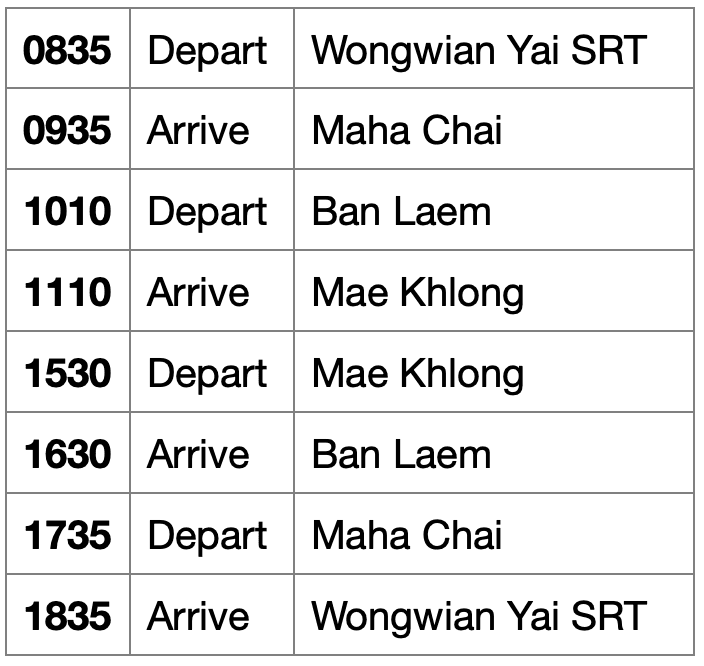
Timings of the trains arriving and leaving the railway market. As you can see your itinerary gives you the opportunity to observe two trains passing through the market:

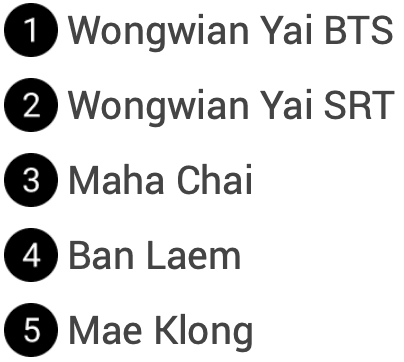
Wrapping up
I hope you enjoy your day. It will probably be tiring and hot and therefore you will have definitely earned a drink and a massage.
As always if you find any errors in this post I would be very grateful if you would drop me a comment below.
Best wishes
Derek
